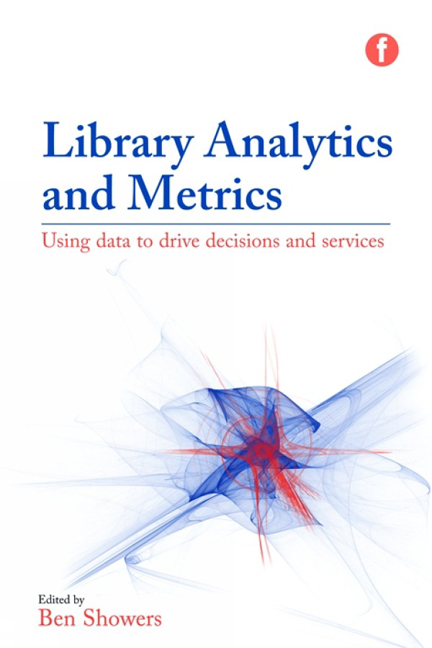Book contents
- Frontmatter
- Dedication
- Contents
- List of figures and tables
- Contributors
- Acknowledgements
- Introduction: getting the measure of analytics and metrics
- 1 Library data: big and small
- 2 Data-driven collections management
- 3 Using data to demonstrate library impact and value
- 4 Going beyond the numbers: using qualitative research to transform the library user's experience
- 5 Web and social media metrics for the cultural heritage sector
- 6 Understanding and managing the risks of analytics
- 7 Conclusion: towards a data-driven future?
- Index
2 - Data-driven collections management
Published online by Cambridge University Press: 09 June 2018
- Frontmatter
- Dedication
- Contents
- List of figures and tables
- Contributors
- Acknowledgements
- Introduction: getting the measure of analytics and metrics
- 1 Library data: big and small
- 2 Data-driven collections management
- 3 Using data to demonstrate library impact and value
- 4 Going beyond the numbers: using qualitative research to transform the library user's experience
- 5 Web and social media metrics for the cultural heritage sector
- 6 Understanding and managing the risks of analytics
- 7 Conclusion: towards a data-driven future?
- Index
Summary
Chapter overview
Data-driven collections management is not a new concept for libraries. From reading lists to user recommendations, through to library management systems and the careful analysis of data in spreadsheets and other systems, using data to inform collections management and policy is a key part of curating a library collection. It is therefore of little surprise that libraries and librarians have, over the past few years, become increasingly interested in exploring more sophisticated and joined-up ways of taking advantage of library transaction and management data to help drive more informed and open approaches to decision making on collection management.
This chapter explores some of the most recent and innovative examples of how libraries are refining their collection-management processes by creating tools and applications that can utilize data to make more informed decisions about a wide range of collection-management decisions. Case Study 2.1, from Harvard University Library, explores the creation of a library analytics toolkit and dashboard with a primary focus on collection data. Here the data and visualizations are aimed both at supporting the librarians in their everyday decision making and at enabling users to see how collections have changed over time. Case Study 2.2 describes the work of the Copac Collections Management (CCM) tool and the development of a prototype shared collections management service for UK academic libraries – a service that will enable both local holdings analysis and comparison across other Copac research and specialist libraries in the UK:
• CASE STUDY 2.1 Dulin, K. and Spina, C., Building an analytics toolkit at the Harvard Library (Harvard University), p. 28
• CASE STUDY 2.2 Cousins, S. and Massam, D., Collection management analytics: the Copac Collection Management tools project (Mimas, University of Manchester), p. 35
The collections turn
Libraries increasingly find themselves in a double bind. While budgets are reduced or remain static, user demand for access to the library, its services and content continues to grow. Further compounding this situation are the changing expectations and demands on space from users, meaning that large physical collections need to be rethought and space has to be reconfigured to meet the changing demands of users.
- Type
- Chapter
- Information
- Library Analytics and MetricsUsing Data to Drive Decisions and Services, pp. 23 - 46Publisher: FacetPrint publication year: 2015



